Complete Dog Training is an extremely gratifying experience that not only influences your dog’s behavior but also enhances the special link you share with your companion. This thorough book is your indispensable companion, providing insights and practical tips for effective training, whether you’re starting with a young puppy or teaching new habits to an older dog. It is intended to be your guide through the world of dog training, examining fundamental principles and offering the information and skills required for a rewarding and peaceful connection.
We’ll go into the details of dog training, covering everything from fundamental instructions to specialized behaviors. Beyond basic compliance, the goal is to build mutual understanding, trust, and collaboration. Every phase in the training process adds not only to a well-behaved dog but also to his or her general enjoyment and security. This thorough handbook stresses practical and ethical tactics, recognizing each dog’s uniqueness and adjusting the training approach to their specific requirements. Whether you’re a seasoned dog owner or a newbie trainer, this guide provides invaluable advice, suggestions, and precise instructions to ensure a profitable and fun training experience for both you and your canine friend.
Start Early and Be Consistent
Dog training is a fulfilling undertaking that starts with a basic idea: the sooner you start, the more successfully you can learn your dog to behave in certain ways.
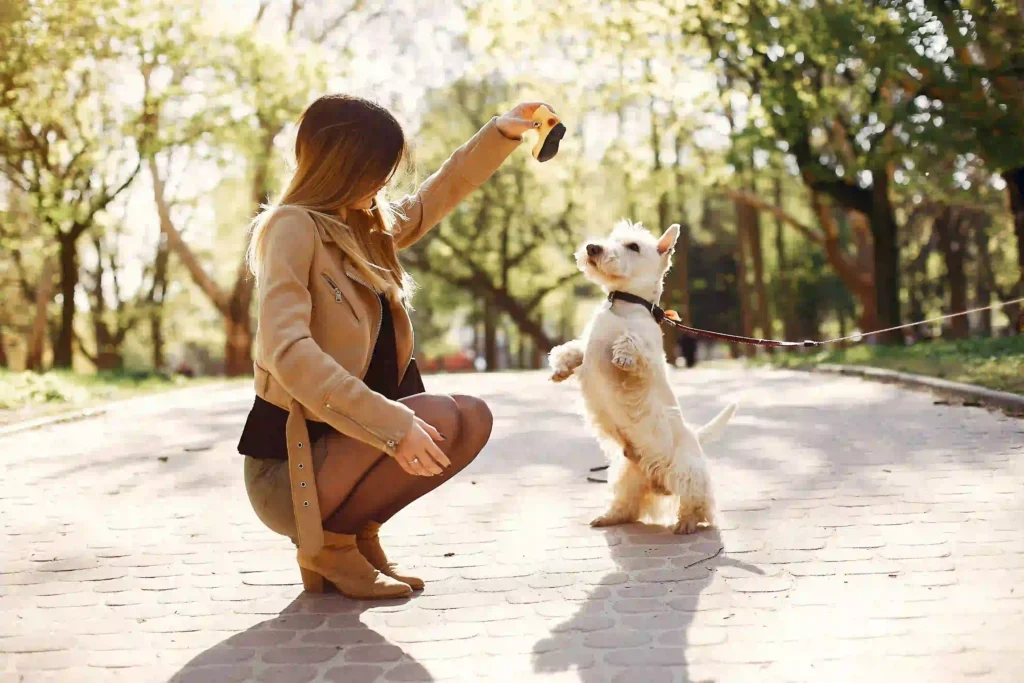
It’s crucial to remember that although getting started early has its benefits, it’s never too late to begin training. The secret is to be consistent, regardless of how active your dog is as a puppy or as an adult. Effective training is built on consistency, which provides a foundation for your pet to understand and internalize desirable actions. Early on, clearly defining ground rules and expectations helps to create a healthy relationship by making sure that you and your dog are on the same page.
Training consistency is a continuous effort that goes beyond the initial phase. It entails establishing and upholding guidelines for your dog that apply to every area of their existence. Your dog will feel more secure when you set predictable expectations for them, regardless of the complexity of the activity, even when they are basic orders. It removes any doubt and uncertainty and gives them a crystal-clear idea of what is expected of them. It’s not only about following the rules; it’s also about applying them consistently. Make sure that everyone in the home abides by the same rules so that the training process presents a cohesive front.
When you start your dog training journey, keep in mind that it’s a dynamic and ever-changing process. As you address obstacles and encourage excellent habits, persistence, and commitment are crucial. The strong bond you have with your dog as a result of regular training becomes evidence of how strong your attachment is. Their behavior is shaped by this commitment, which also enhances their general pleasure and well-being. Therefore, embrace the power of consistency as you prepare the path for a well-behaved and pleased canine partner, whether you’re guiding a joyful puppy through their first lessons or introducing training to an older friend.
Positive Reinforcement
Positive reinforcement is a potent and compassionate approach in dog training that emphasizes the significance of rewarding desired behavior to promote its repetition.
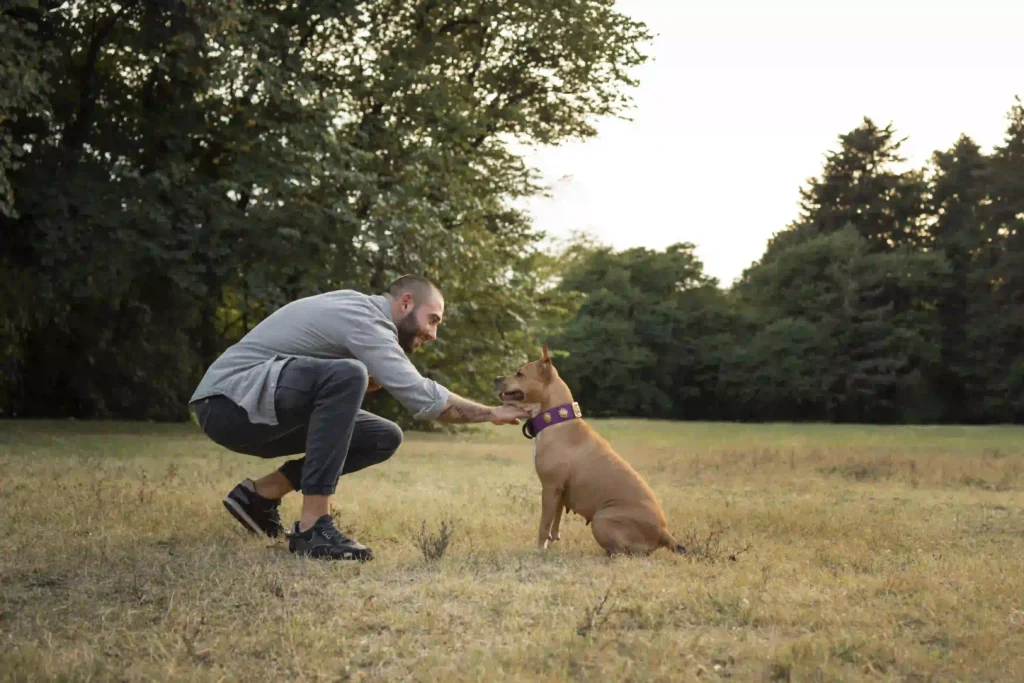
The idea is straightforward but profound: give your dog goodies, praise, or playtime when they display the desired behavior. This fosters a positive association between the conduct and the reward in addition to providing them with an instant acknowledgement of their good behavior. Because positive reinforcement is based on the knowledge that dogs and humans are both driven by the possibility of rewards, training your pet may be both successful and pleasurable.
Rewarding your dog for exhibiting the appropriate behavior is a quick and easy way to let them know you’re pleased with them. Positive reinforcement offers rapid feedback to help your dog comprehend what pleases you, whether it’s a well-executed command, a quiet period, or whatever action you are trying to reinforce. Your dog will become more willing to repeat the activity as a result of this positive association, making training enjoyable and collaborative for both of you.
It’s significant to note that positive reinforcement helps your dog and you form a solid, trustworthy attachment. Rather than instilling fear or intimidation, it builds a relationship based on support and understanding. Not only are you modifying behavior when you approach the training process with an optimistic outlook, but you’re also establishing a bond based on mutual respect, collaboration, and happy times. Providing your dog with positive reinforcement is essential to having a well-mannered, content, and emotionally contented dog.
See our latest blog on “How to Turn Your Daily Walk With Your Dog Into an Adventure”
Basic Commands
Learning the fundamentals of dog training is not only helpful but also necessary in the early phases. The fundamental building blocks of efficient communication between you and your dog are commands like sit, stay, come, and down. These foundational cues offer a way to control your dog in a variety of scenarios and serve as a basis for more complex training. Teaching fundamental commands builds a language of comprehension and cooperation that is the cornerstone of a well-mannered and obedient dog, going beyond mere superficial compliance.
- Sequential Learning Gradually introduce commands to your dog, letting him learn one before going on to the next. This step-by-step method guarantees a thorough comprehension of every instruction, opening the door to a more extensive training program.
- Consistent Reinforcement To constantly reinforce each command, use treats and positive reinforcement. Maintaining consistency helps your dog understand new information more easily and forms a positive relationship that makes learning fun.
- Application in the Real World Practice commands in a range of real-world settings, advancing progressively from safe havens to increasingly difficult circumstances. This guarantees that your dog will always obey commands, even in the presence of outside distractions.
- Patience and Positive Reinforcement As your dog learns, exercise patience and give them positive reinforcement for their accomplishments. Encourage a good training environment by acknowledging and appreciating little accomplishments and by remaining upbeat and encouraging.
Keep in mind that every encounter you have with your dog as you help him learn basic instructions is an opportunity to deepen your relationship. Command language turns into a common language that strengthens mutual understanding and trust. A happy relationship where your well-trained dog follows commands and enjoys the joyful companionship that results from efficient communication and shared learning experiences is built on a foundation of consistent and positive training.
Socialization
Socialization is a fundamental component of dog training that has a significant impact on your dog’s general health and behavior.
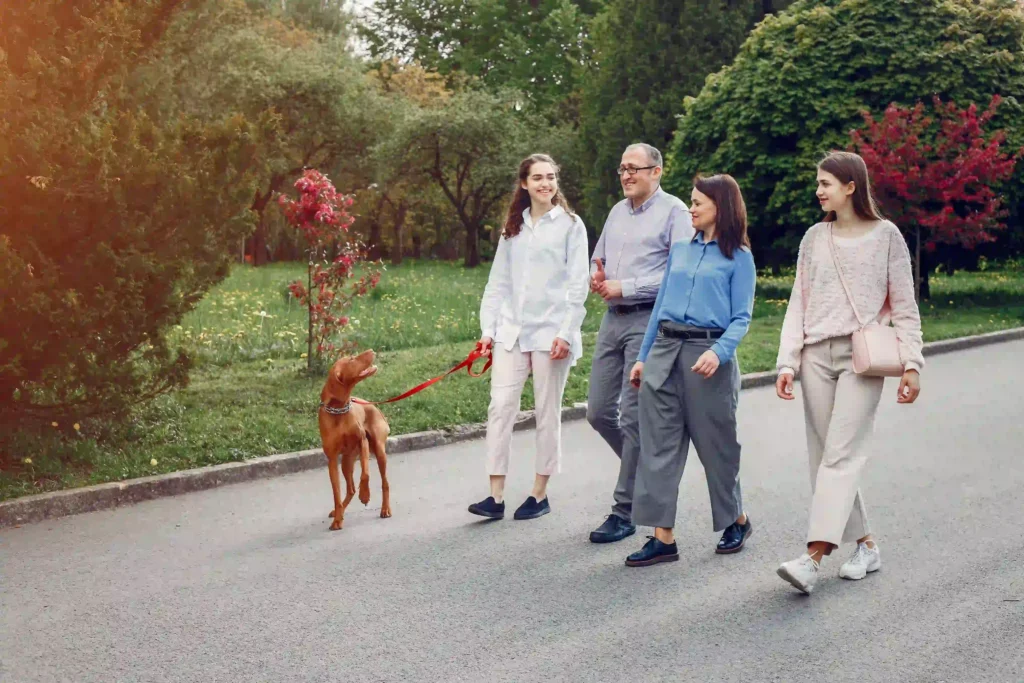
The secret is to introduce your dog to a wide range of situations, humans, and other animals at a young age. The foundation for averting behavioral problems and raising a dog that is both comfortable and well-behaved in a range of settings is laid by this purposeful exposure. When intelligently done, socialization is a slow and continuous process that produces a dog who is adaptive, self-assured, and capable of navigating the complexity of both the human and canine worlds.
Start your dog’s socialization process by exposing him to a variety of settings, from parks and streets to diverse indoor spaces. Permit children to have a good and controlled encounter with the sights, sounds, and smells of their surroundings. At the same time, expose your dog to a variety of people and animals, including adults, kids, and other breeds. This exposure lessens the possibility of dread or anxiety in strange situations and contributes to the development of a well-rounded and tolerant temperament.
It is crucial to reward composed and constructive behavior throughout socializing. Reward your dog’s good behavior with treats, praise, or play when they react to new situations calmly or with others. Your dog will like learning since this positive reinforcement makes a favorable relationship with social interactions. As you assist them in their socialization journey, remember that every interaction helps them become more self-assured and develop into a friendly, well-mannered friend. Investing in socialization means that your dog will eventually be able to comfortably navigate the world and form positive relationships with people and other animals.
Leash Training
One of the most important things you can do to make sure your dog and you go on delightful and safe walks together is to become an expert at leash training.
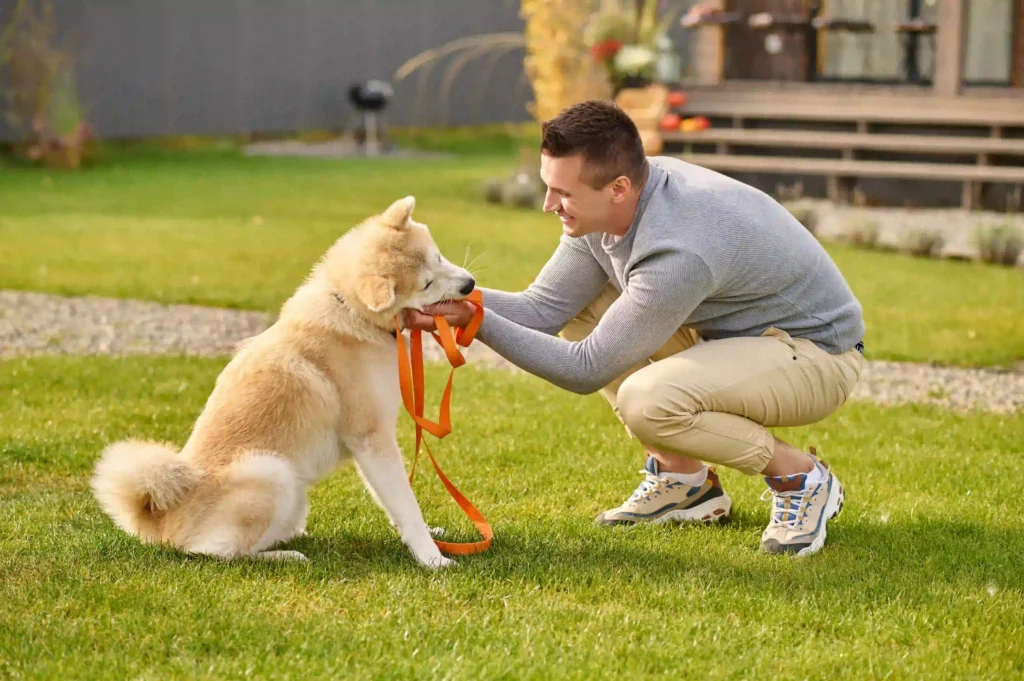
It’s not only sensible to teach your dog to walk without tugging on the leash, but it’s also essential to building a strong relationship when you two go on outside activities. In this training endeavor, using treats and positive reinforcement is a highly effective method for rewarding your dog for displaying the desired behavior, which is walking loosely on a leash.
Patience and consistency are necessary during the leash training procedure. Start in a supervised setting so that your dog can become used to feeling the harness and leash. Reward your dog with goodies and praise when they stay near without pulling to promote loose-leash walking. To create a distinct link between the desired activity and the reward, it is imperative to constantly reinforce this positive behavior. Gradually extend your walks’ duration as your dog starts to associate strolling on a loose leash with favorable results, exposing them to a variety of settings and distractions.
Beyond just being useful, leash training enhances the enjoyment of outdoor activities in general. The relationship between you and your pet is strengthened when your well-behaved dog walks peacefully on a leash, turning walks into times of happiness and camaraderie. You’re not only teaching excellent leash etiquette but also cultivating a healthy relationship that goes beyond your home with gentle direction and positive reinforcement. As you progress through the leash training process, keep in mind that every step strengthens a bond based on mutual respect, trust, and the enjoyment of discovering new things together.
Addressing Undesirable Behaviors
A crucial part of the training process is recognizing and dealing with your dog’s unwanted habits. Like people, dogs can exhibit behaviors like excessive barking, jumping, or chewing, which are frequently caused by boredom, anxiety, or a need for attention.
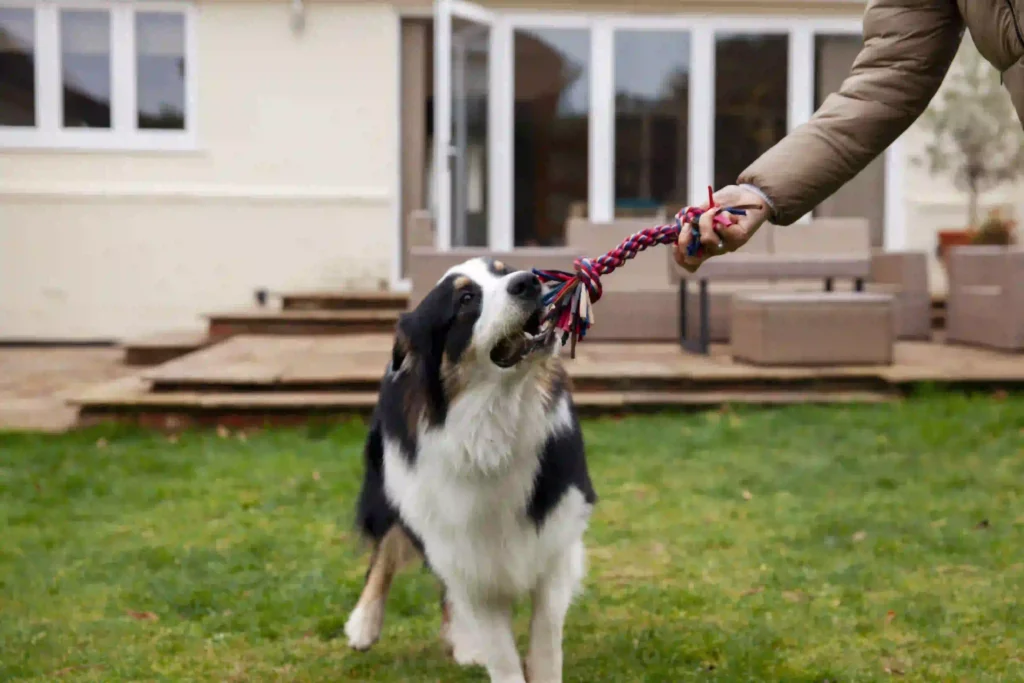
The secret to changing undesirable habits into more desired ones is to intervene calmly and consistently. To help your pet behave in a more appropriate manner, use positive and redirection-based methods rather than harsh ones that could cause fear or provoke aggression. Start by figuring out what is causing the unwanted behavior. Is your dog acting out of boredom, attention, or in response to a particular trigger? Knowing the root problem enables you to modify your strategy with efficacy. For example, if your dog is barking excessively because it is bored, giving them toys or stimulating tasks to perform can divert their attention and energy to more productive uses.
It’s a good tactic to divert their focus to more suitable pursuits. To stop them from chewing on something they shouldn’t, give them different toys, involve them in interactive play, or give them a special chew toy. Treats or praise are examples of positive reinforcement that helps reinforce the message that participating in these alternative activities is pleasurable and welcomed. To make sure that your dog continually identifies the redirection with positive outcomes, consistency is essential in this procedure.
Advanced Training and Tricks
Once your dog completes the foundational levels of learning basic instructions, they will be ready to go on to more advanced training and entertaining tricks.
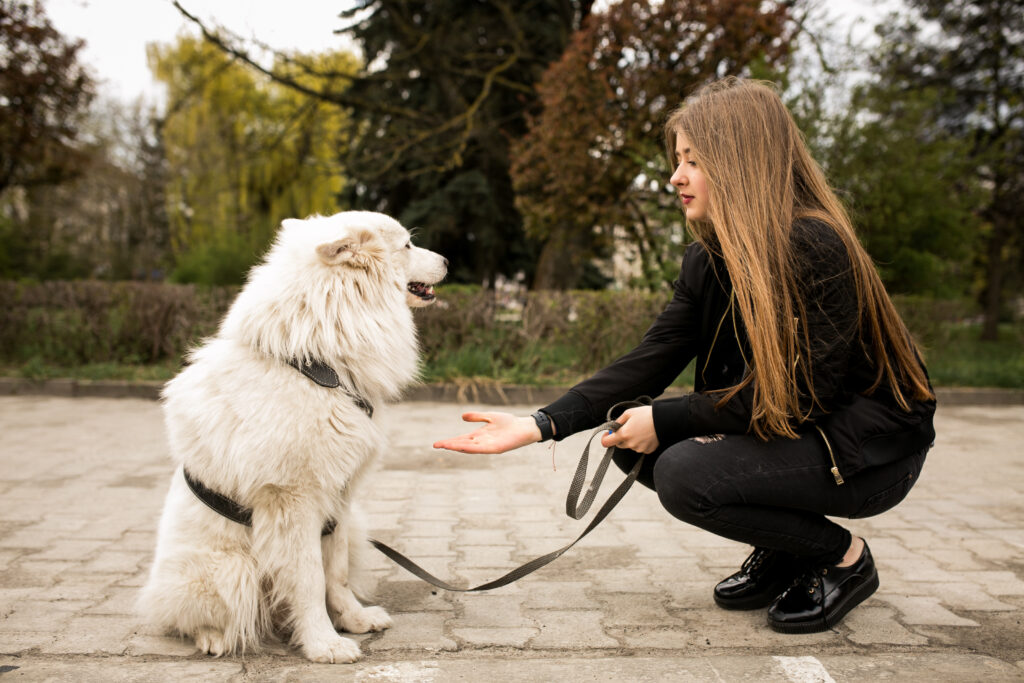
Beyond the useful commands like sit, stay, and come, advanced training exposes your dog to a range of engaging activities that strengthen the link between you and your pet while also keeping their mind occupied. These more difficult workouts can include things like agility tests that improve their physical coordination, command-based item retrieval, or even learning how to react to hand signals. Adopting advanced training means providing a dynamic and stimulating training experience rather than just adding new abilities to their arsenal.
By giving your dog more challenging tasks, you may minimize boredom and promote lifelong learning by stimulating their minds and helping them solve problems. Introduce physical and mental difficulties to your agility exercises with jumps, tunnels, and weaving poles. Fetching particular objects gives their abilities a useful component that makes them not only obedient but also useful in a variety of circumstances. Using hand signals in their training improves communication and shows how much your dog and you understand each other.
Furthermore, advanced training provides a foundation for deepening your relationship. It’s a cooperative process that calls for positive reinforcement, open communication, and trust. Every trick or command that is accomplished and successfully learned becomes a shared accomplishment, strengthening the bond of collaboration and understanding. Celebrate little accomplishments, embrace the excitement of learning together, and tackle advanced instruction with patience and eagerness. During the advanced training phase, your dog will go from complete obedience to a more sophisticated and engaging connection in which they will actively engage in learning and exploration as a team.
Patience and Understanding
When it comes to dog training, the qualities of understanding and patience are like foundations that support the journey’s success. It’s essential to understand that every dog is different and develops at their own rate.

As you go through the complexities of introducing advanced training, resolving problems, and teaching new instructions, patience will become your constant companion. Dogs pick up on your emotional cues, so it’s important to resist giving in to frustration. Maintaining a calm and compassionate attitude not only creates a great training atmosphere, but it also makes your relationship with your animal friend stronger.
One way to bring happiness into the training process is to celebrate tiny triumphs and progress. Recognizing your dog’s accomplishments, whether it be learning a new trick, improving in behavior, or grasping a new command, boosts their self-esteem and motivates them to keep learning. Little triumphs set the stage for bigger ones, giving you and your dog a sense of satisfaction. Recognizing accomplishments also encourages perseverance in the face of difficulties, making the training process a shared experience.
Patience and understanding also require flexibility in your training methods. If one strategy doesn’t produce the intended results, don’t be afraid to change course. Because dogs react differently to different training methods, it’s important to pay attention to their cues so that you may customize the training to meet their specific requirements. In addition to making training more fun, a cheerful and understanding attitude promotes cooperation and trust in the group. Training turns into a joint endeavor where the process is just as important as the ultimate result, and the long-lasting relationship between you and your dog is strengthened by tolerance, understanding, and celebrating each other’s accomplishments.
Conclusion for Complete Dog Training
Training your dog from start to finish is a journey that calls for commitment, persistence, and encouragement. You may develop a loving and enduring relationship with your dog in addition to molding them into well-mannered companions by beginning early, exercising patience, and keeping a good outlook. Recall that comprehension and communication are essential for effective dog training, which will make it a happy and satisfying experience for both you and your furry friend.

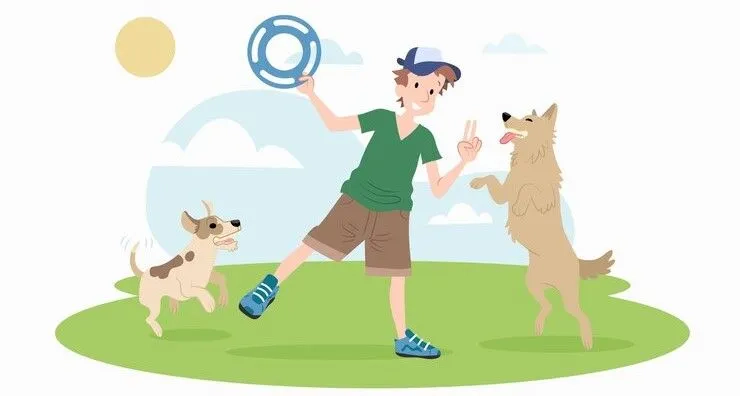

Great wordpress blog here.. It’s hard to find quality writing like yours these days. I really appreciate people like you! take care